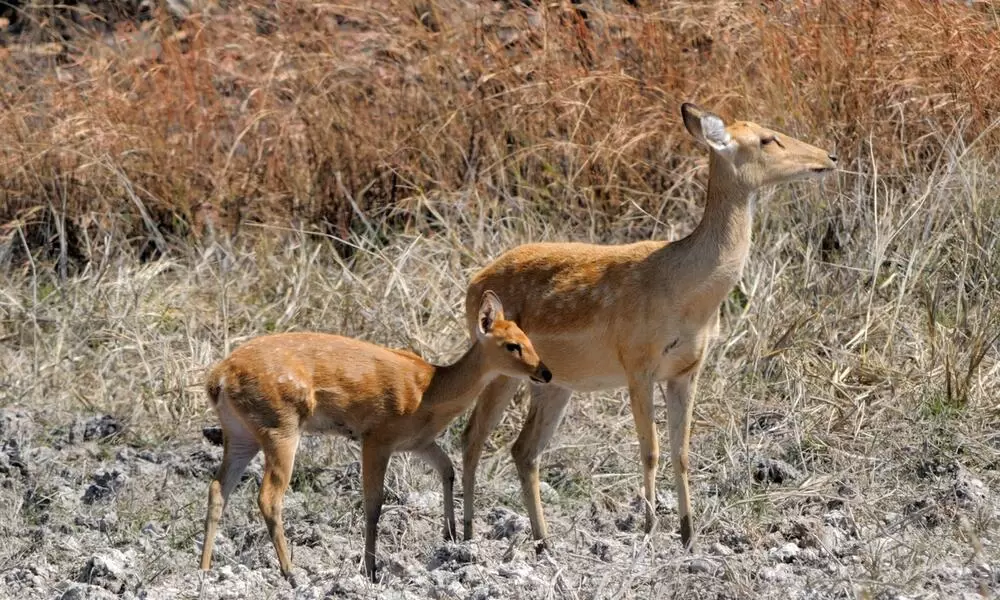The WWF is run at a local level by the following offices...
- WWF Global
- Adria
- Argentina
- Armenia
- AsiaPacific
- Australia
- Austria
- Azerbaijan
- Belgium
- Bhutan
- Bolivia
- Borneo
- Brazil
- Bulgaria
- Cambodia
- Cameroon
- Canada
- Caucasus
- Central African Republic
- Central America
- Central Asia
- Chile
- China
- Colombia
- Croatia
- Democratic Republic of the Congo
- Denmark
- Ecuador
- European Policy Office
- Finland
The Mekong Flooded Forest (MFF) landscape contains a magnificently diverse array of freshwater ecosystems. The river and its expansive floodplains are a vital lifeline for the Cambodian people, providing fish for sustenance, waterways for transportation, irrigation for rice cultivation and a natural buffer against flooding.
However, the significance of the MFF landscape goes beyond our daily needs for survival. The area is also a sanctuary for many globally significant fauna, including iconic mammals like the revered Irrawaddy dolphin and remarkable giants like the Mekong giant catfish, giant carp and giant freshwater stingray. MFF is also home to the elusive hog deer, whose rediscovery by WWF-Cambodia in 2006 marked a pivotal moment in conservation efforts.
The Mekong Flooded Forest (MFF) spans an impressive 27,450km² and encompasses wetlands as well as sandy and rocky riverine habitats, situated in northern-central Cambodia and bordering Laos.
WWF-Cambodia is particularly active along a 121km stretch of the Mekong River between Kratie and Stung Treng provinces, an area renowned for rich biodiversity harboured in deep river pools. Within this portion of the river, we have identified approximately 411 inland fish species, 37 mammal species, 281 bird species, 52 reptile and amphibian species and 674 vascular plants.
Where We Work:
Sambo Wildlife Sanctuary
82,506 hectares
Prek Prasob Wildlife Sanctuary
14,221 hectares
We aim to benefit communities by securing land tenures, establishing sustainable financing mechanisms, diversifying livelihood sources and enhancing conservation awareness. We are also combating wildlife crime in key areas, like the Mekong dolphin conservation zone, through improved law enforcement. Other focus areas include implementing sustainable management plans and adopting non-hydro renewable energy sources.
Overfishing in the Mekong River and Tonle Sap Lake, combined with infrastructure development, is causing extensive damage to fish populations and habitat in our landscape. Land conversion activities and illegal logging are exacerbating habitat loss and displacing communities reliant on traditional lands. These issues contribute to the overexploitation of natural resources and hinder self-governed sustainable resource management efforts. Finally, the illegal wildlife trade poses a significant threat to numerous endangered species, causing further ecological challenges in the region.

Species Spotlight
The Irrawaddy dolphin, characterized by its shy nature and small size, are considered Cambodia's "national living treasure". Remarkably, they are one of very few species capable of living in both fresh and marine waters.
During the dry season, these dolphins reside in the Mekong’s deep water pools, where they are exposed to harmful fishing methods. Gillnets, an illegal fishing tool, pose a significant danger to these critically endangered dolphins.
Ecotourism linked to the conservation of dolphins, forests and fishing grounds benefits our community by generating employment opportunities. By protecting these areas, we not only ensure the safety of our environment but also sustainably enhance our livelihoods. Responsible ecotourism enables us to showcase our picturesque surroundings while prioritizing the well-being of our community and environment.
- Kim Vannak, Member of Koh Promcharey’s community-based ecotourism (CBET) site
White-shouldered ibis (Pseudibis davisoni)

Hog deer (Axis porcinus)

River tern (Sterna aurantia)

Irrawaddy dolphin (Orcaella brevirostris)

Eld's deer (Rucervus eldii)

Red-headed Vulture (Sarcogyps calvus) and other vultures

Giant ibis (Thaumatibis gigantea)

lesser adjutant (Leptoptilos javanicus)







